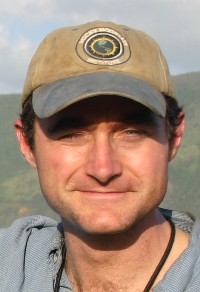Kevin Hand | |
|---|---|
 Kevin Hand | |
| Nationality | American |
| Scientific career | |
| Fields | |
| Thesis | On the physics and chemistry of the ice shell and sub-surface ocean of Europa (2007) |
| Doctoral advisor | Christopher Chyba |
Kevin Hand is an astrobiologist and planetary scientist at JPL. [1] [2] He is also the founder of Cosmos Education [1] [2] and was its president until 2007. [3] He was working at NASA Ames when he was inspired to form Cosmos Education in 1999 after getting a grant from the Earth and Space Foundation to tour African schools to talk about how education relates to space research. [4] [5]